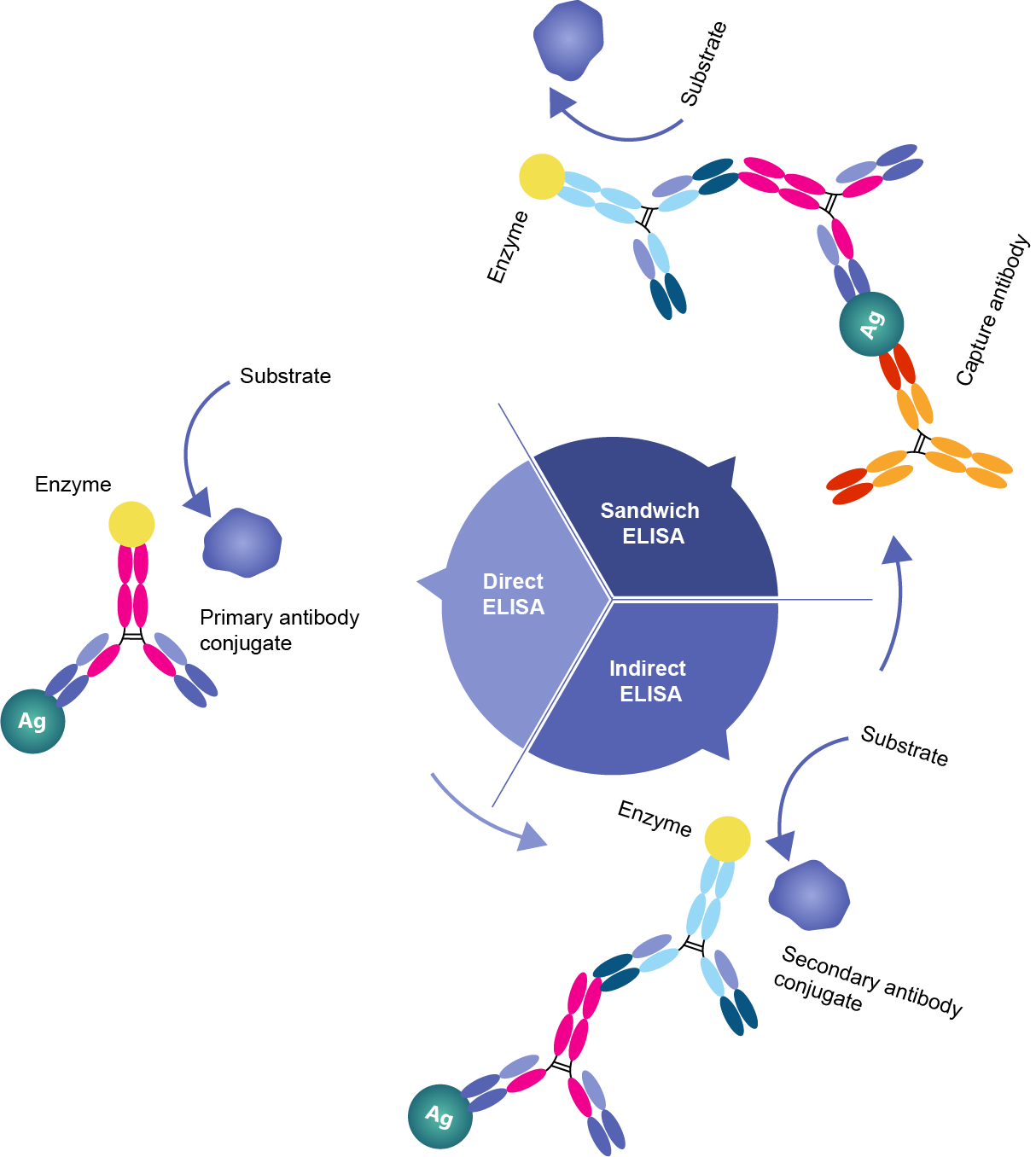Indirect ELISA
For indirect ELISA, the antigen coated to a multi-well plate is detected in two stages. Firstly, an unlabeled primary antibody which is specific for the coated antigen is applied. If the antigen is a recombinant protein fused with a specific tag such as his-tag, s-tag and GST-tag, the anti-tag polyclonal antibody can also be used as a primary antibody. Then, an enzyme-labeled secondary antibody is bound to the primary antibody. The secondary antibody is usually an anti-species antibody and is often polyclonal. Click here for the Protocol of Indirect ELISA.
 Fig.1 ELISA assays comparison.
Fig.1 ELISA assays comparison.
Generally speaking, the indirect ELISA is most suitable for determining total antibody concentration in samples. As the most popular format for ELISA, the indirect ELISA has the advantages and disadvantages.
Advantages
- High Sensitivity - Each primary antibody contains several epitopes that can be bound by the labeled secondary antibody, achieving signal amplification.
- Greater flexibility - Different primary antibodies can be used with a single labeled secondary antibody. Besides, a wide variety of labeled secondary antibodies are available commercially.
- Versatile - Many primary antibodies can be made in one species and the same labeled secondary antibody can be used for detection.
- Maximum immunoreactivity of the primary antibody is retained because it is not labeled.
- Economical - Fewer labeled antibodies are needed.
Disadvantages
- Possibility of background noise - Cross-reactivity might occur with the secondary antibody, resulting in non-specific signal.
- Longer procedure than direct ELISA - An extra incubation step is required.
Everything you need to know to perform your indirect ELISA experiments is in our convenient Guide of Indirect ELISA - a complete guide to ELISA that takes you from basic ELISA principles to protocols, analysis, and troubleshooting. Our Troubleshooting of Indirect ELISA is designed to help you improve and troubleshoot the common problems that researchers have when performing indirect ELISA assays. Optimizing your methods and removing common mistakes can dramatically improve your results and the sensitivity of your ELISA assays.


